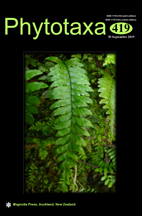Abstract
The clade that currently represents the green algal family Microsporaceae is one of the few filament-forming groups of Chlorophyceae. Molecular phylogenies show this clade containing the genus Microspora and the more recently circumscribed Parallela, whose filaments are loosely arranged and often multiseriate. We initially investigated the enigmatic bog-loving Dispora speciosa as a commonly accepted member of the mucilage-forming Radiococcaceae or a putative member of crucigenoid chlorophytes (a non-monophyletic group formerly placed in Scenedesmaceae) based on its two-dimensional colony formation. However, our plastid and nuclear ribosomal phylogenies confidently placed Dispora within the genus Parallela instead, and therefore distantly related to both Radiococcaceae and crucigenoids. Upon further examination of the cell morphology and ultrastructure, we found several corresponding features between Dispora and Parallela, despite Dispora’s apparent coccoid-colonial gross morphology. Both genera have cells with a parietal plastid positioned around a large central nucleus. The loose, multiseriate filament formation in Parallela can be interpreted as similar to Dispora’s flat colony formation in its natural state. Because we only present data from one non-type species and strain of Dispora, we cannot merge the entire genus with Parallela. We do however argue that D. speciosa, of which this strain is the sole available, morphologically and ecologically faithful representative, should be transferred into Parallela, and the specimen prepared from strain ACOI 1508 be designated as type. Our study also impacts the current view on evolution of multicellular (colonial and filamentous) forms in Chlorophyceae.

